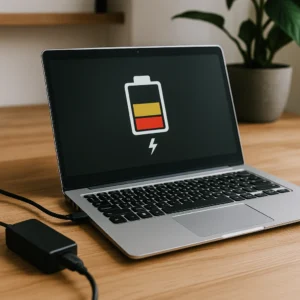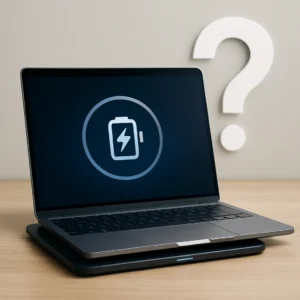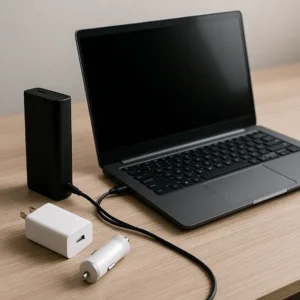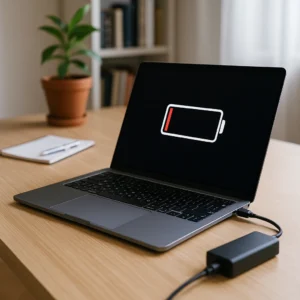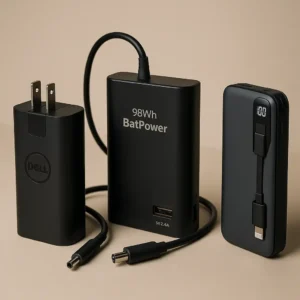5 Ways to Fix Laptop Battery Not Charging – Quick Fixes That Work
Disclosure: This post contains affiliate links. As an Amazon Associate, I earn from qualifying purchases—at no extra cost to you.
Last Updated: August 7, 2025
When your laptop suddenly refuses to charge, it’s more than an inconvenience—it can disrupt your entire workday, study session, or gaming streak. The good news? Most of the time, it’s something small you can fix at home without spending money or calling tech support.
If you’d like to prevent battery issues in the future, check out our guide on how to make your laptop last longer—it’s packed with practical habits that really help.
1. Try a Different Charger or Power Outlet
It might sound obvious, but the charger is often the first thing to go. Cables wear out over time, even if they still look fine. If your laptop isn’t charging, test it with another compatible charger, or try a different power outlet. This simple check can rule out a faulty cable or wall socket before diving into deeper fixes.
2. Remove the Battery (If Possible) and Hold the Power Button
For laptops with removable batteries, this quick trick often helps. Shut everything down, unplug the charger, and take out the battery. Press and hold the power button for 30 seconds—this drains any leftover power that might be confusing the system. Then pop the battery back in and try charging again. It’s a go-to reset that still works on many older models.
3. Check Battery Health in Windows or macOS
Sometimes, the issue isn’t charging—it’s that the battery itself is worn out. On Windows, go to Settings > System > Power & Battery to get a look at battery health. On a Mac, hold the Option key while clicking the battery icon. If you see a message like “Service Recommended,” that’s your sign the battery’s reaching the end of its life.
4. Update or Reinstall Battery Drivers
Battery glitches are often tied to outdated or buggy drivers—especially on Windows. Open Device Manager, find the “Batteries” section, and right-click your battery driver. You can try updating it, or uninstall and restart your laptop to force Windows to reinstall the latest version. This refresh can solve some surprisingly stubborn charging issues.
5. Let It Cool Down
Heat can cause all kinds of weird behavior, and charging is no exception. If your laptop’s been running hot—especially during gaming or heavy tasks—it might stop charging temporarily to protect the battery. Let it cool down for a few minutes before plugging in again. If this happens often, consider using a cooling pad to keep temps more stable.
FAQs
Q: Why does my laptop say “plugged in, not charging”?
A: That message usually points to a power supply or battery issue. Start by checking the charger, outlet, and battery health.
Q: Should I leave my laptop plugged in all day?
A: Most modern laptops can handle it, but unplugging once in a while helps preserve long-term battery health.
Q: How do I know when to replace the battery?
A: If it drains quickly even with light use, or your system recommends service, it’s likely time for a new one.
Conclusion
If your laptop stops charging, don’t panic—it’s often something simple like a worn charger, overheating, or a driver glitch. These five quick fixes can save you time, money, and stress—especially if you rely on your laptop for work or school.

